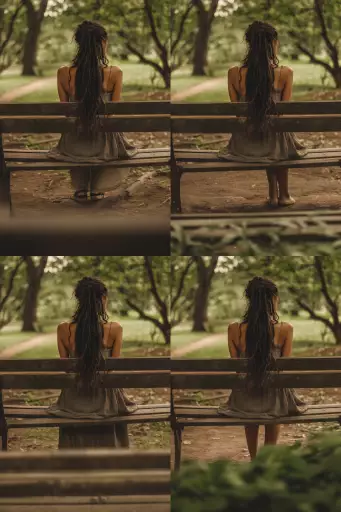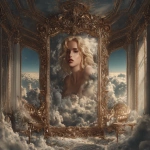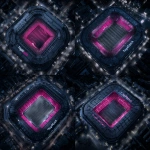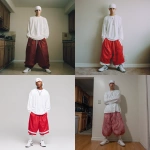Explore the Best AI Image Gallery

Beyond the Brushstroke: How Blockchain is Transforming the Creative Industry
The world of art, design, and intellectual property has always been a space where innovation thrives. From the Renaissance masters to the digital artists of today, creators have constantly pushed boundaries and explored new mediums. Now, a revolutionary technology called blockchain is poised to reshape the creative landscape as we know it, offering unprecedented opportunities for artists, consumers, and the industry at large.
A Decentralized Canvas: Understanding Blockchain in the Creative Sector
At its core, blockchain is a decentralized, immutable ledger that records transactions across a network of computers. This means that every transaction, such as the sale of an artwork or the transfer of copyright ownership, is permanently recorded and verifiable by all participants. For creators, this offers several significant advantages:
- Enhanced Authenticity and Ownership: Blockchain can be used to create unique digital tokens, known as NFTs (Non-Fungible Tokens), that represent ownership of digital or physical assets. This provides irrefutable proof of authenticity and ownership, combating counterfeiting and fraud in the art market.
- Direct Connection with Consumers: Blockchain enables artists to bypass traditional gatekeepers like galleries and auction houses, connecting directly with their audience and selling their work through decentralized platforms. This fosters a more transparent and equitable relationship between creators and consumers.
- Royalties and Fair Compensation: Smart contracts, which are self-executing agreements stored on the blockchain, can be used to automate royalty payments to artists every time their work is sold or licensed. This ensures that creators continue to benefit from their creations even after the initial sale.
Beyond Art: Applications of Blockchain in the Creative Industry
The potential applications of blockchain extend far beyond the realm of fine art. Here are a few examples:
- Music Distribution and Copyright Protection: Artists can use blockchain to distribute their music directly to fans, bypassing traditional record labels and retaining greater control over their work. Smart contracts can also be used to enforce copyright agreements and prevent piracy.
- Filmmaking and Content Creation: Blockchain can streamline the process of film financing, distribution, and rights management. Creators can raise funds from investors through tokenized securities, and viewers can purchase access to exclusive content using blockchain-based tokens.
- Design and Intellectual Property Protection: Designers can use NFTs to protect their creations and ensure that they are properly credited. This is especially important in the fashion industry, where counterfeit goods are a major problem.
Navigating the Ethical Landscape
As with any emerging technology, blockchain adoption in the creative sector comes with its own set of ethical considerations:
- Accessibility and Inclusivity: Its important to ensure that blockchain technology is accessible to all creators, regardless of their technical expertise or resources. Initiatives are needed to bridge the digital divide and empower underrepresented communities.
- Data Privacy and Security: Blockchain transactions are transparent and immutable, which raises concerns about data privacy. Robust security measures must be in place to protect sensitive information from unauthorized access.
- Environmental Impact: Some blockchain networks require significant energy consumption for transaction verification. Its crucial to explore sustainable solutions and minimize the environmental footprint of blockchain adoption.
The Future of Creativity in a Blockchain World
The integration of blockchain into the creative industry is still in its early stages, but its potential is immense. As the technology matures and becomes more widely adopted, we can expect to see:
- A More Decentralized Creative Ecosystem: Blockchain will empower artists and creators to have greater control over their work and connect directly with their audience.
- New Forms of Artistic Expression: The unique properties of blockchain will inspire new genres of art, music, and other creative works.
- Enhanced Collaboration and Innovation: Blockchain can facilitate seamless collaboration between creators from different disciplines and geographic locations.
The future of creativity is being rewritten in the language of blockchain. By embracing this transformative technology, the creative industry can unlock new possibilities for artistic expression, economic empowerment, and societal impact.







](https://images.ai-img.art/thumbnails/150/3ccc82ef0ad0cc1ab1dfb5b8e6bc37924fcad45dadf41cbd1cb21d19fc7f640a.webp)


](https://images.ai-img.art/thumbnails/150/807ac97f95d56e8cc7cf714e13299d80bf6bcb5b4d80b77a7f06f30246184943.webp)





](https://images.ai-img.art/thumbnails/150/fc468fe14407b96489933a55227127071fd5f6c0505be74ca4dcb2f1e2fa3771.webp)
](https://images.ai-img.art/thumbnails/150/83ec831b9fb19e0db5a520b051b9556f3f594b87acc957ffee094a06a565e6f0.webp)







](https://images.ai-img.art/thumbnails/150/738b292720ee21b57673dfb75ad851f4c34d16f5006ae3027ba685feaddb6b04.webp)

](https://images.ai-img.art/thumbnails/150/05b3252b3f681226a3df9027b069db31c005f91b72257a74367c4102f03a2ba0.webp)
](https://images.ai-img.art/thumbnails/150/57afc09cc38edf73880f760b7ebe1852c5522c6b4051836717b2e56b6f7f913c.webp)





](https://images.ai-img.art/thumbnails/150/69d81ae5ecde297f3c11da78435c5fc00fbac7b00e2c7ccd89d7bbeb014e0541.webp)










](https://images.ai-img.art/thumbnails/150/908bcb9950a44fd4b37d1a84cf00178988cea9507738d7ad4f92707c692461ef.webp)
